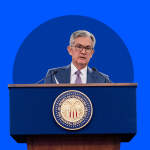The seven largest stocks in the S&P 500 at the start of 2024 belonged to three sectors: tech (Apple
Apple
Microsoft
Amazon
Tesla
The fact that a few of these stocks are among the largest isn’t a significant departure from the norm. Microsoft became the index’s largest component in 1999 and has largely remained among the top three ever since. By 2011 Apple was the second largest component. However, what stood out in 2023 was that all the earnings per share gains (EPS) in the last three quarters were concentrated in those three sectors, according to Standard and Poor’s, while all others actually detracted from the S&P 500’s EPS growth. It seemed like nothing could go wrong for those three sectors, as their growth of operating margins and sales also surpassed all others.
According to FactSet, analysts expect more of the same for the first-quarter earnings releases that are already underway. Five of those companies (NVIDIA, Amazon.com, Meta Platforms, Alphabet, and Microsoft) are expected to record strong 64% EPS growth and the other 495 to show a decline of 6%. With fundamentals being that strong, why were those leading stocks hit so hard last week?
The answer may lie in the expectation that those top five stocks’ contribution to EPS is set to shrink for the rest of the year but it’s expected to grow for the remaining 495. This is a big change: By year’s end, the top five stocks’ EPS growth is seen declining from 64% to just under 20%, while growing for the other 495 from that 6% contraction to more than 17% expansion.
Furthermore, first-quarter results for Meta, Alphabet and Microsoft are due later this week, along with Intel
Intel
Other hurdles to stock gains early this quarter were the somewhat disappointing Consumer Price Index and Producer Price Index releases and much stronger than expected retail sales. Before that, inflation had been perceived to be on a gradual path toward the Fed’s target of 2%. But in the wake of those CPI and PPI numbers, progress seemed stalled. Accordingly, the Fed continued to discourage the idea that cuts to interest rates were imminent. This caused the 10-year U.S. Treasury yield to rise by more than 0.4% this quarter, creating a clear negative effect on stocks, which fell in tandem with the rise in rates.
Meanwhile, the economy continues to show strength not only in retail sales but also in employment, home sales, and industrial production. All of these developments are further supported by monetary aggregates that appear to be in early stages of expansion after a long period of contraction, as measured by the Center for Financial Stability. A more comprehensive view of the economy will come Thursday with the release of the first-quarter GDP estimate, rounding up a week unusually packed with important news for investors.
If earnings, revenues, and margins start growing across all stocks instead of being confined to the top few, a long-delayed allocation shift out of mega-caps and into the rest of the market may be gaining momentum in the upcoming quarters. To be sure, this has had many false starts but, if history is any guide, it seems inevitable. Choosing an equal-weight version of the S&P 500 index like RSP
Invesco S&P 500 Equal Weight ETF
SPDR S&P 500 ETF Trust
Read the full article here
















